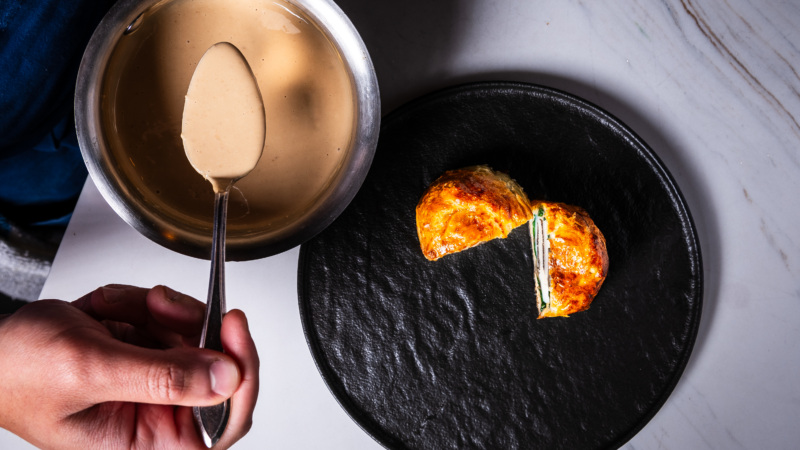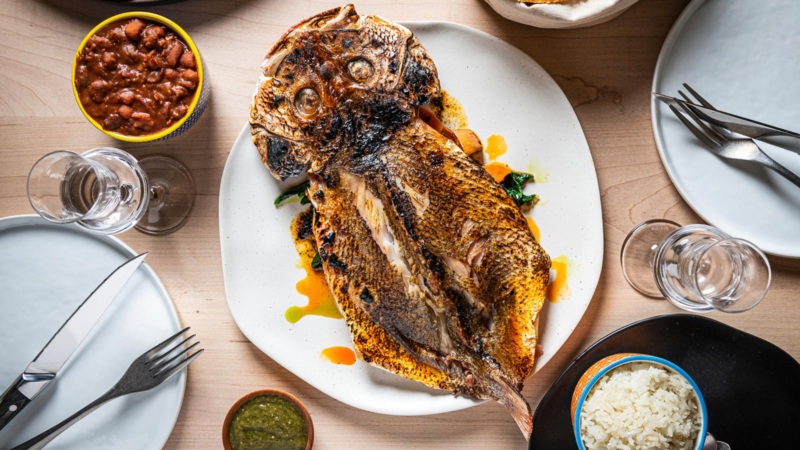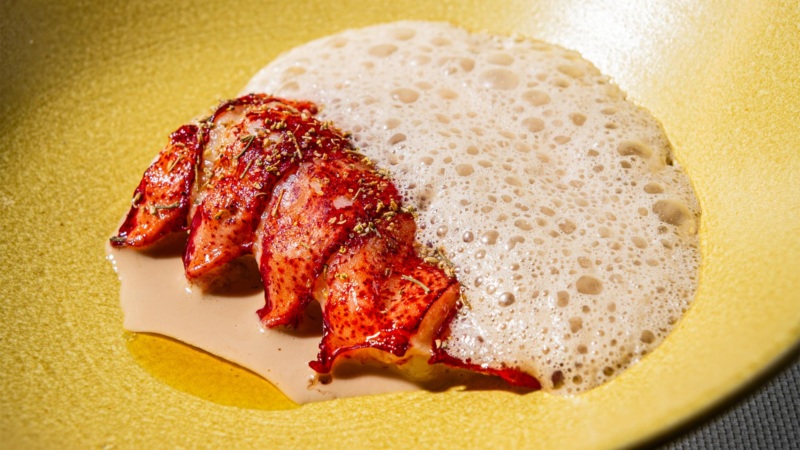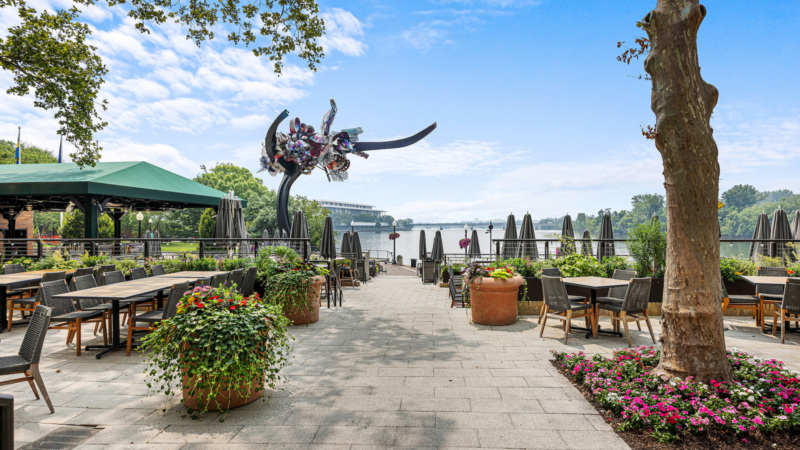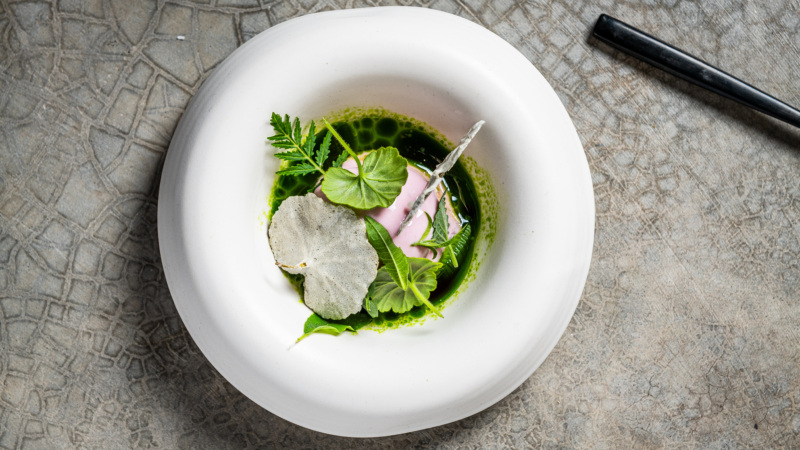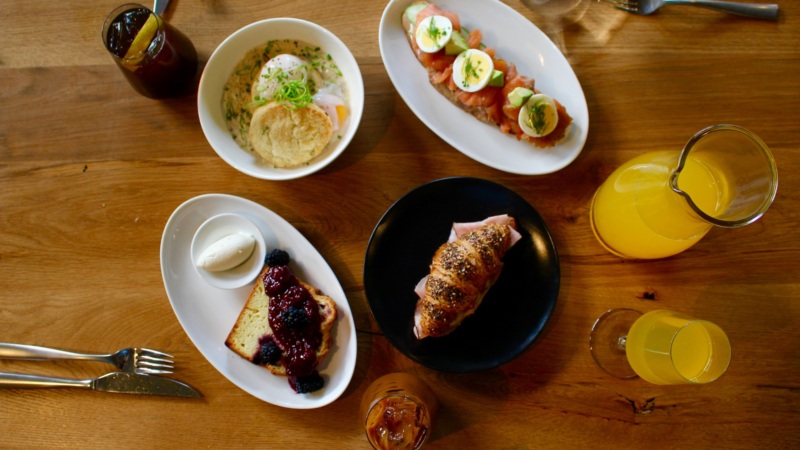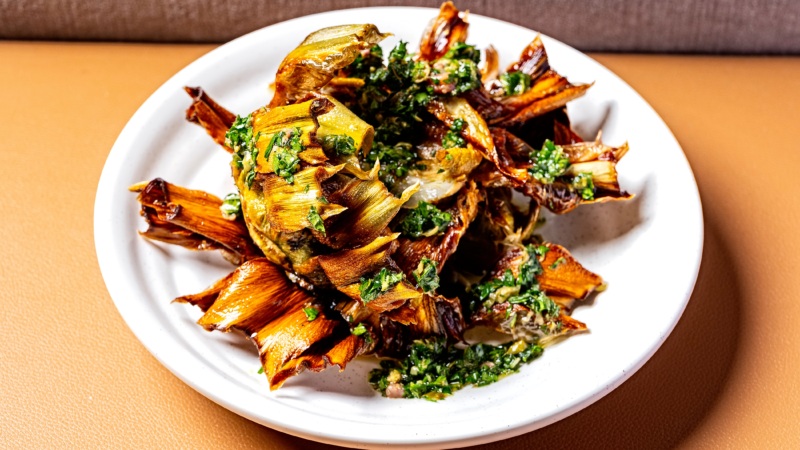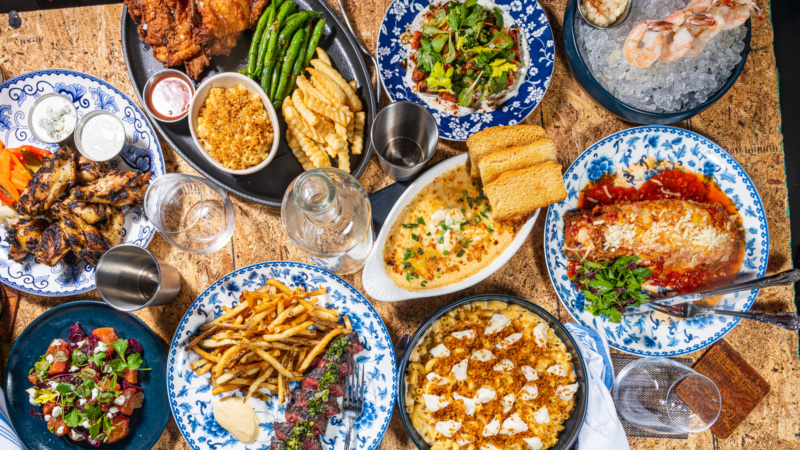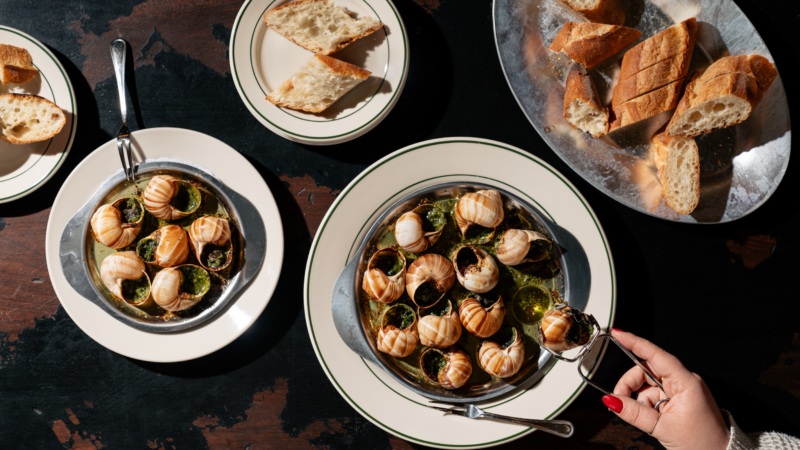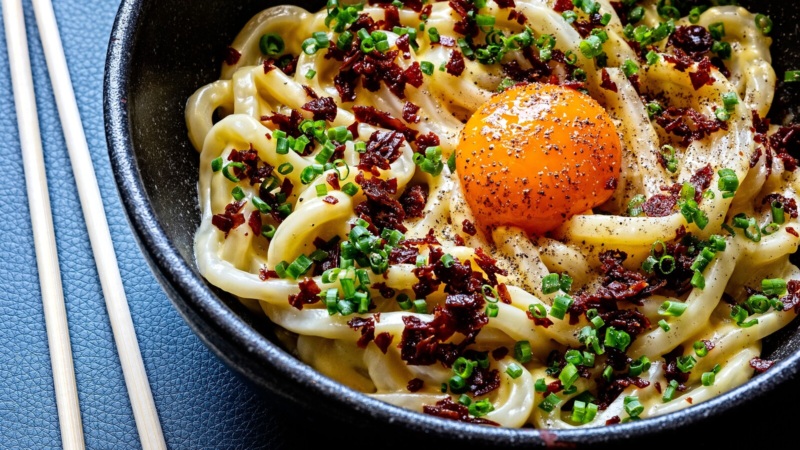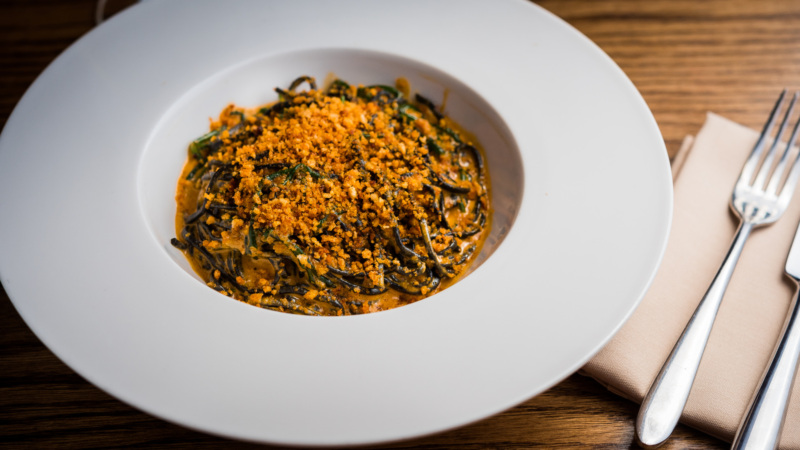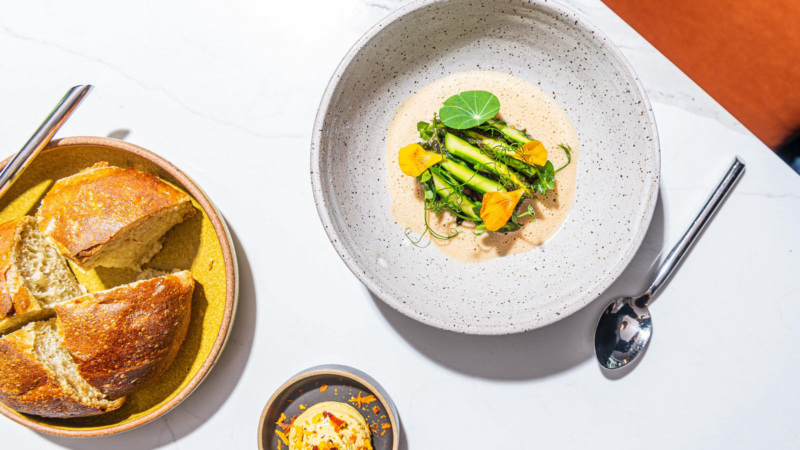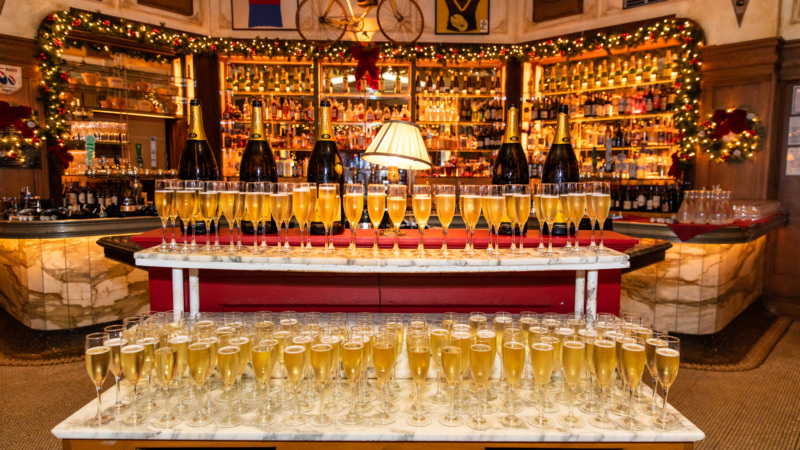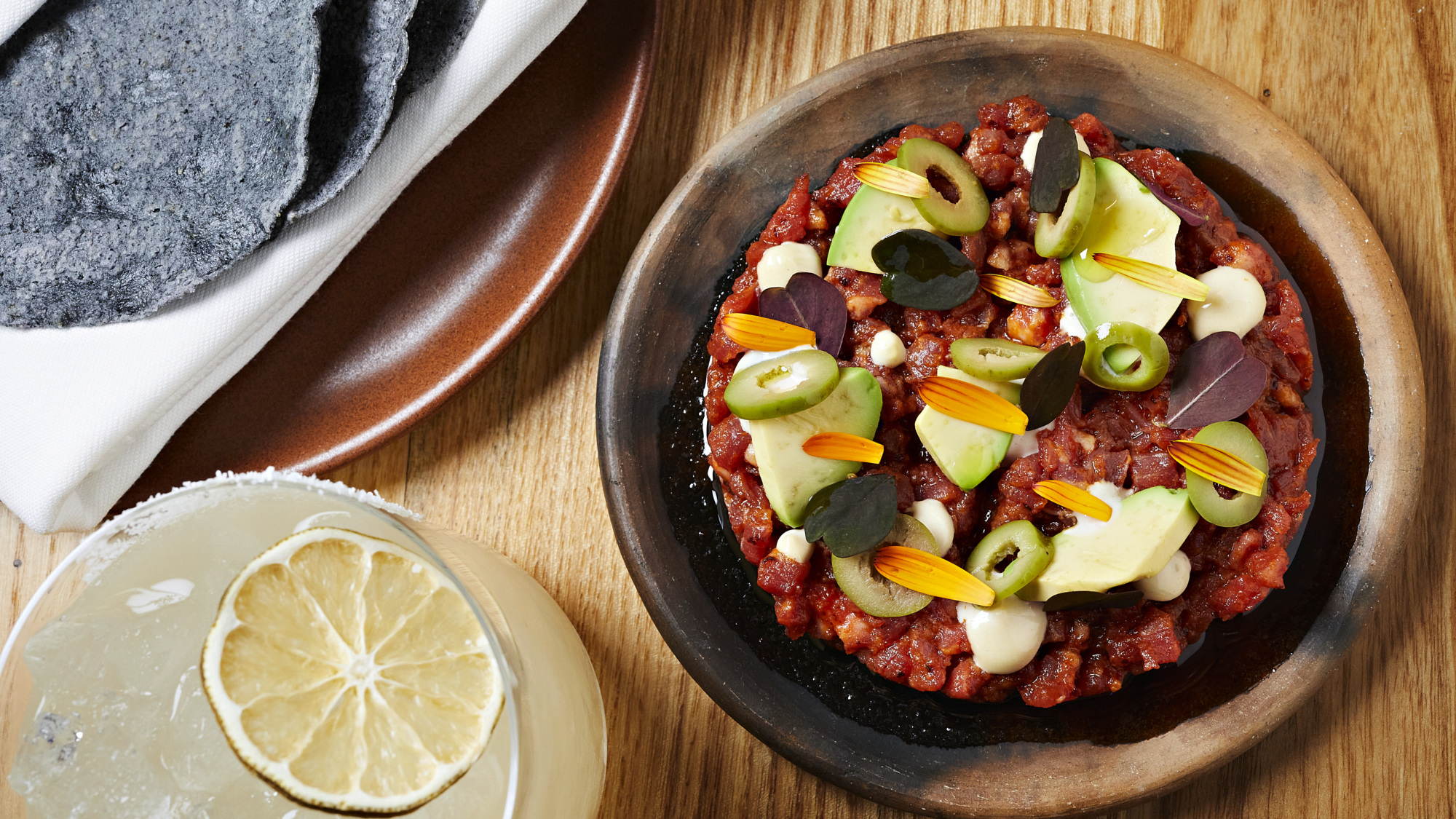
Pascual Brings Top Mexican Cooking to a D.C. Stage, Smoke and All
A fire is alight at the dimly lit Pascual, just a few blocks south of H Street Corridor. Conceptually, that flame belongs to San Pasqual, the patron saint of cooks and kitchen — and the restaurant’s namesake.
Literally, you’ll find (and feel) a blazing hearth at the center of Pascual’s kitchen, where nearly everything is cooked in a wood-fueled flame.
Four years in the making, Pascual is the long-awaited restaurant from chefs Matt Conroy and Isabel Coss, part of a small portfolio of D.C. restaurants by Popal Group that includes Lapis and Lutèce. If you’ve dined your way around town, you might recognize the two for their outstanding yet unpretentious French food at Lutèce, a cozy neo-bistro in the heart of Georgetown. But their roots and hearts have always been with Mexican cuisine. And at Pascual, their singular style of cooking that country’s food is finally taking the front burner.
With its bold yet playful menu, Pascual is quickly becoming an exciting destination on Capitol Hill. Here’s what you need to know about this contemporary Mexican restaurant — sure to be one of this year’s most exciting new additions to the city’s dining roster.
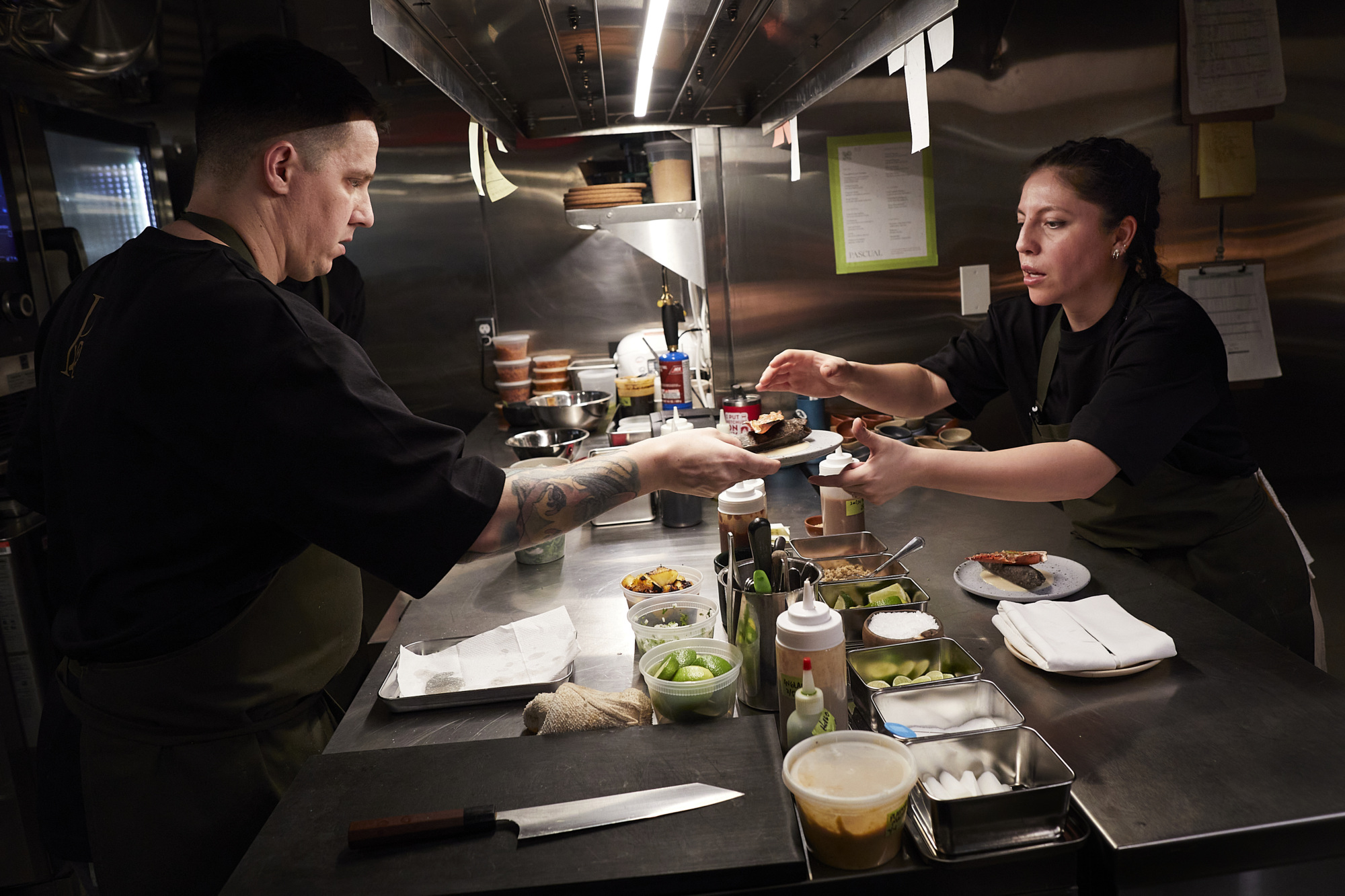
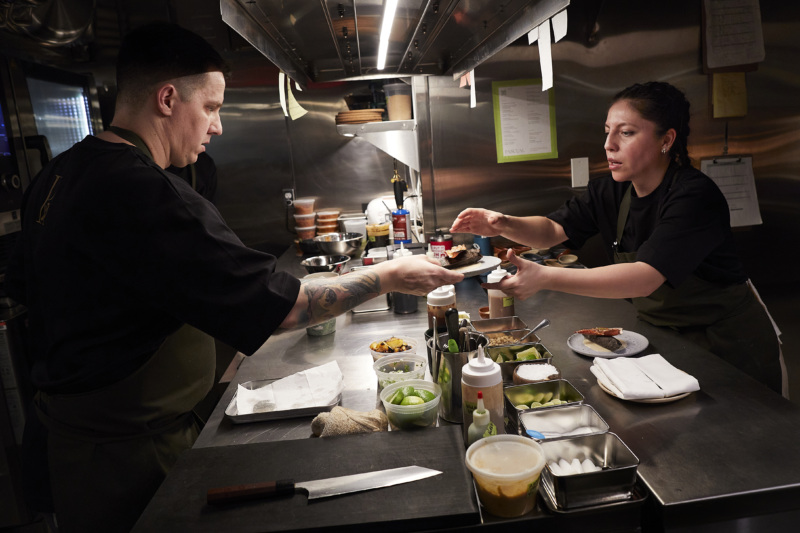
1. It’s a “Mexican bistro,” with influences from multiple regions.
To showcase the huge breadth and complexity of Mexican cooking, the two chefs didn’t want to limit their sights to one single region. On their opening menu, you’ll find a crispy and cheesy carrot tlayuda, often dubbed Oaxacan pizza, inspired by the city’s slightly charred street dish. Then, there’s a slow-braised lamb neck barbacoa wrapped in the leaves of the maguey plant, a dish with origins in the Caribbean that can now be found in Hidalgo and across Mexico, served with expertly hand-pressed tortillas by one of their cooks, Balbina Chávez Flores. For one dessert, Coss took inspiration from childhood mall trips in Mexico City to create light and crispy buñuelos, flecked with toasted Mexican cinnamon and shaped like flowering rosettes.
“The menu,” says Coss, “showcases Mexican techniques that are beautiful and complex and hard.”
The two have impressive résumés when it comes to Mexican cooking. At 17, Coss’s first job in her native Mexico City was baking bread at Enrique Olvera’s landmark Pujol. That was before she moved to New York to work in the esteemed Mexican restaurants Empellón and Cosme. It was at Empellón where she met Conroy, her future partner and spouse. Prior to living in D.C., Conroy helmed the kitchen as chef de cuisine at Brooklyn’s Michelin-starred Oxomoco. (Little known fact: Conroy moved to D.C. after answering a Craigslist ad from Popal Group head Omar Popal.)
2. Experimental, yes. Traditional? Also yes.
The chefs emphasize playful experimentation in the kitchen, especially when it comes to traditional Mexican dishes — think of it as a Mexican take on the French concept of the neo-bistro. That notion “gives you freedom,” Coss says, “but you’re also gonna find a mole, the recipe from my grandma in Michoacán. It’s gonna be more traditional, but it’s gonna be served with plantain millefeuille or a parsnip tamale.”
Many ingredients are sourced from across Mexico, including high-quality corn, spices, and chiles. But it was also important for the chefs to work with local producers, too. “When we moved to D.C., our first job was to start looking for farmers,” Coss says. Those sources include lamb exclusively from Elysian Fields Farm in Pennsylvania, sustainably grown chiles from Queens, N.Y., and fresh organic and biodynamic herbs from the DMV area. During their search, they also hit it off with Jon Shaw of Karma Farms in Monkton, Md, who they eventually asked to grow a native Mexican crop called hoja santa, which is spooned as an oil over a luxe Mexican chocolate cake.
Inside the restaurant, you’ll find natural touches recalling a dreamy Mexico City villa. Designed by Omar Popal, the space features white walls adorned with hanging plants, handmade Mexican accents, and marbled light orbs dangling over the sleek white bar. The ceramic pottery and plates come from artisans in Mexico, including a group that provides tableware for many of Oaxaca’s local restaurants. “Others, including the restaurant’s signature coffee cups, were handcrafted specifically by a woman that Isabel met two years ago,” Conroy adds.

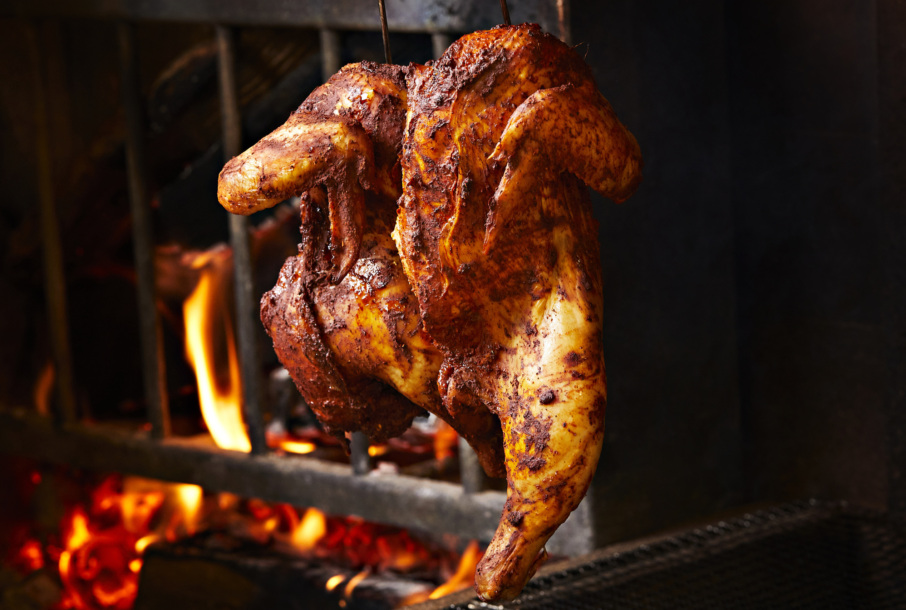
3. Smoke rules the menu.
Smoky flavors are the star of the menu at Pascual. The roaring flame in the hearth at the restaurant’s heart illuminates rows of pineapples, whole chickens slathered in recado rojo, and dozens of al pastor layers spinning on a trompo. Much of the menu plays with smoked vegetable versions of meaty favorites, such as parsnip tamal, or the mushroom-heavy fideos negros. Most, if not all, of the dishes get a smoky kiss from the wood-fired grill before landing at your table.
The inspiration for the hearth comes from trips to Oaxaca and Mexico City over the years. “I still remember the first time in the market. You walk through and there’s all the smoke and everyone grilling,” Conroy says. “Everyone’s got these big stacks of tlayudas sitting there in the market.” At Pascual, their smoky spin on a tlayuda also graces the menu — except theirs uses local carrots and is veg friendly.
Those familiar with the neighborhood might recall the restaurant’s smoky past. And if you sniff around, you might inhale a phantom whiff of smoke from the restaurant’s past as Kenny’s BBQ, a neighborhood staple that closed down in 2022 after 20 years.
Fortunately for the two chefs, the for-sale listing couldn’t have come at a better time. In order to tend to a live fire, you need a kitchen with two separate ventilation systems. And after seeing the space, Conroy’s first instinct was to pitch the live-fire concept to the team, having done most of his cooking at Oxomoco that way.
Pro Tip:
There’s room for walk-ins even amid a crowded guest list.
Right now a table at Pascual may be one of the hardest to come by in D.C. The restaurant is typically completely booked out for the next thirty days, nearly from the moment seats are released at 12 noon. But for those who’ve been eyeing a seat (or a juicy al pastor taco), you’re in luck. Pascual always keeps a few seats for walk-ins; stop in when the restaurant opens and put your name down. And follow Pascual’s Instagram stories; you might just snag a last-minute cancellation.
Live-fire cooking allows the Pascual team to offer intensely rich flavors. That includes not just seared meat and fish but accouterments such as smoked olives, chiles, and papaya for the signature guacamole. Atop the grill, you’ll find the restaurant’s trompo, both of which were crafted by Atlanta’s Grills by Demant, a renowned grill maker that has also completed custom orders for Nashville’s Sean Brock and Kevin Fink of Austin’s Emmer & Rye.
The trompo, a rotating spit, helps blister the meat and pineapple for the al pastor, which has become the restaurant’s signature. “They’re delicious, and I think my favorite taco. But it’s usually just with an electric burner. To get that smoke, that char on it … adds another layer of flavor that’s really unique,” Conroy says. “While the trompo was being put on the grill, me and my sous chef both smiled. We don’t know if we’re ever gonna get sick of seeing this setup.”
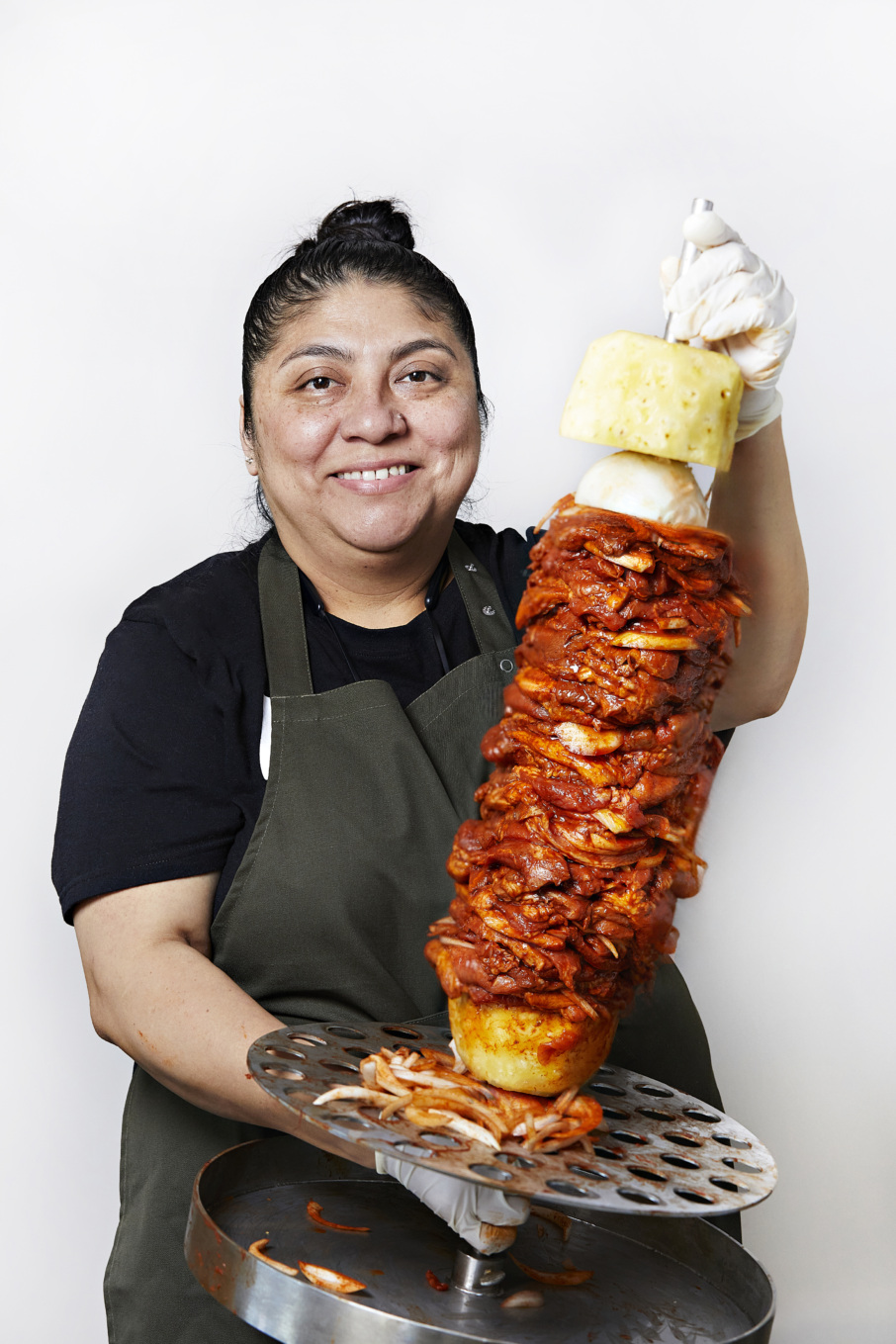
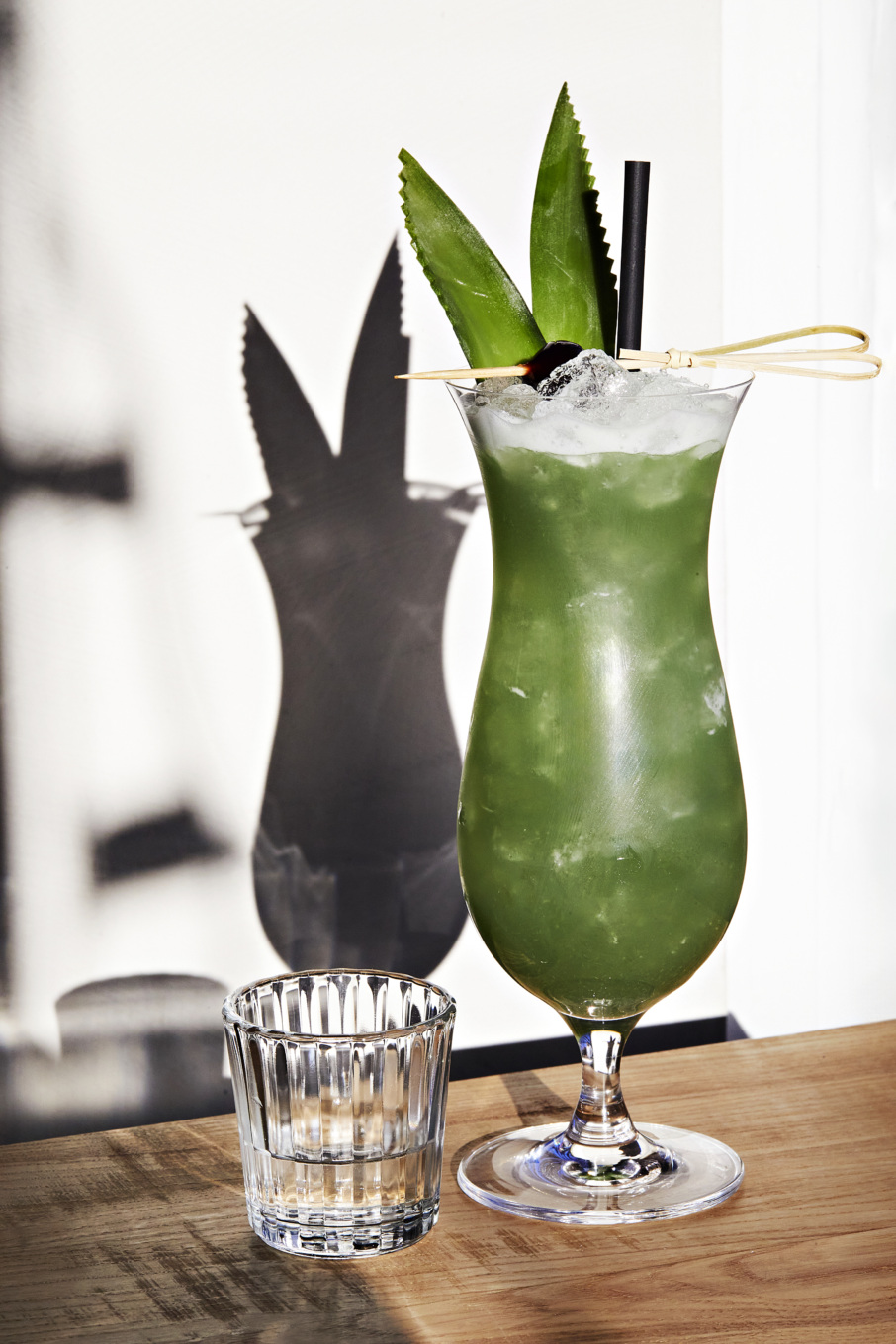
4. On the drinks menu, there’s yet more smoke (and creativity).
Mezcal, that smoky favorite among agave spirits, dominates the drink program, in both tasting flights and cocktails. Even if you’re new to mezcal, the bartenders will happily walk you through its nuances, telling you stories about producers while introducing selections with distinct tasting notes. Each glass will arrive with tropical fruit accompaniments like starfruit and passionfruit.
But the chefs wanted to introduce customers to the vast world of Mexican spirits and cocktails beyond mezcal. You’ll find Mexican rum from Michoacán and slightly bitter yet aromatic glasses of Mexican Fernet, which should delight amaro fans. If cocktails are more your vibe, there’s no shortage of options — with classics like the Paloma sitting alongside creative spins such as … And One For The Doctor, a teal-colored tropical drink that combines gin with olive oil, leeks, peppers, pineapple, and more. (Plus a sidecar of Siete Misterios mezcal.)
Fans of NA beverages are in for a treat, too. There’s a rotating list of agua frescas and virgin margaritas with flavors like hibiscus, watermelon, and smoked pineapple.
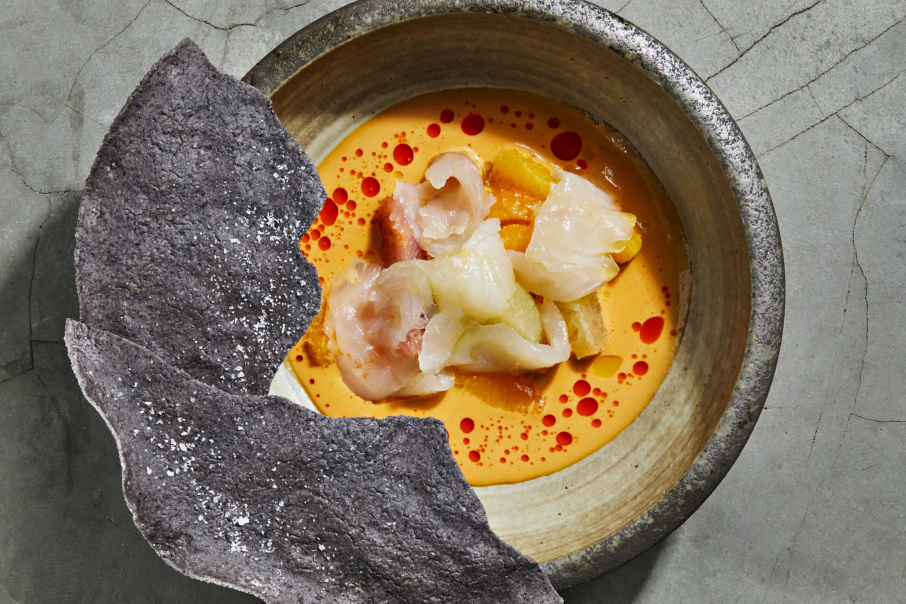
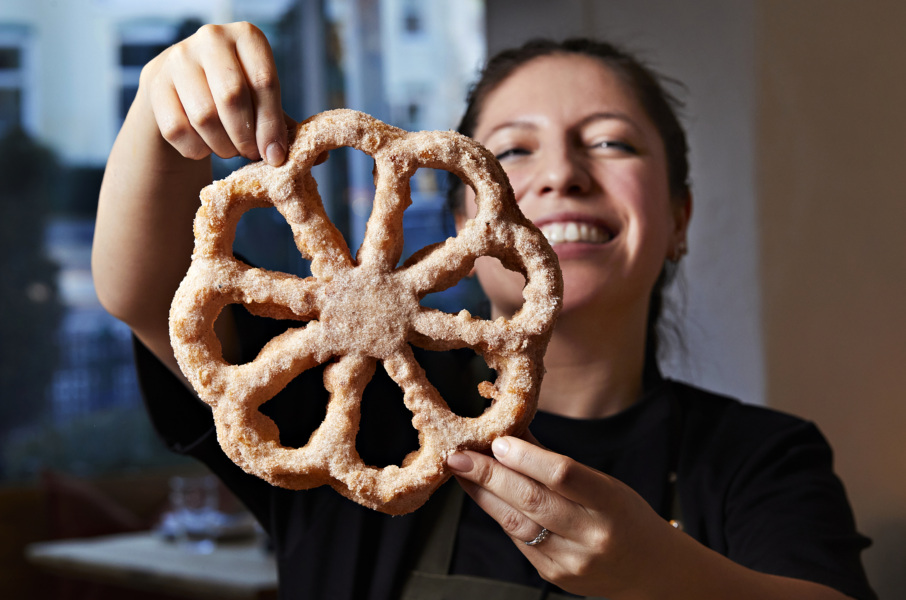
5. Stay tuned for Volcán, the spot’s daytime bakery and cafe.
For the first few weeks, Pascual will be solely focused on its dinner menu. But like many of its D.C. neighbors, the chefs hope to expand the restaurant into an all-day operation during the spring and summer. Come warmer weather, the patio doors will be wide open, allowing the restaurant to reach twice the number of customers.
There’s even better news for regulars and people in the neighborhood: In a few weeks, Pascual plans to open a daytime panaderia called Volcán, which will allow Coss and Pascual’s pastry team to truly shine. You’ll find everything from handcrafted traditional Mexican breads, pastries with seasonal ingredients, and a coffee program with Mexican favorites like carajillos, chocolate con agua, and cold-brew café de olla. Takeout orders for this bakery and cafe will be handed out through a side window, a quaint detail that still exists from the original days of Kenny’s. That smoke-loving legacy continues.
Pascual is open for dinner Thursday through Monday, from 5 to 9 p.m. On Fridays and Saturdays, they open from 5 to 10 p.m.
Jess Eng is a food and culture writer. She regularly contributes to the Washington Post, Epicurious, Resy, Atlas Obscura, and more, and has collaborated with podcasts like Racist Sandwich and the Southern Foodways Alliance’s Gravy. Follow her on Instagram. Follow Resy, too.















